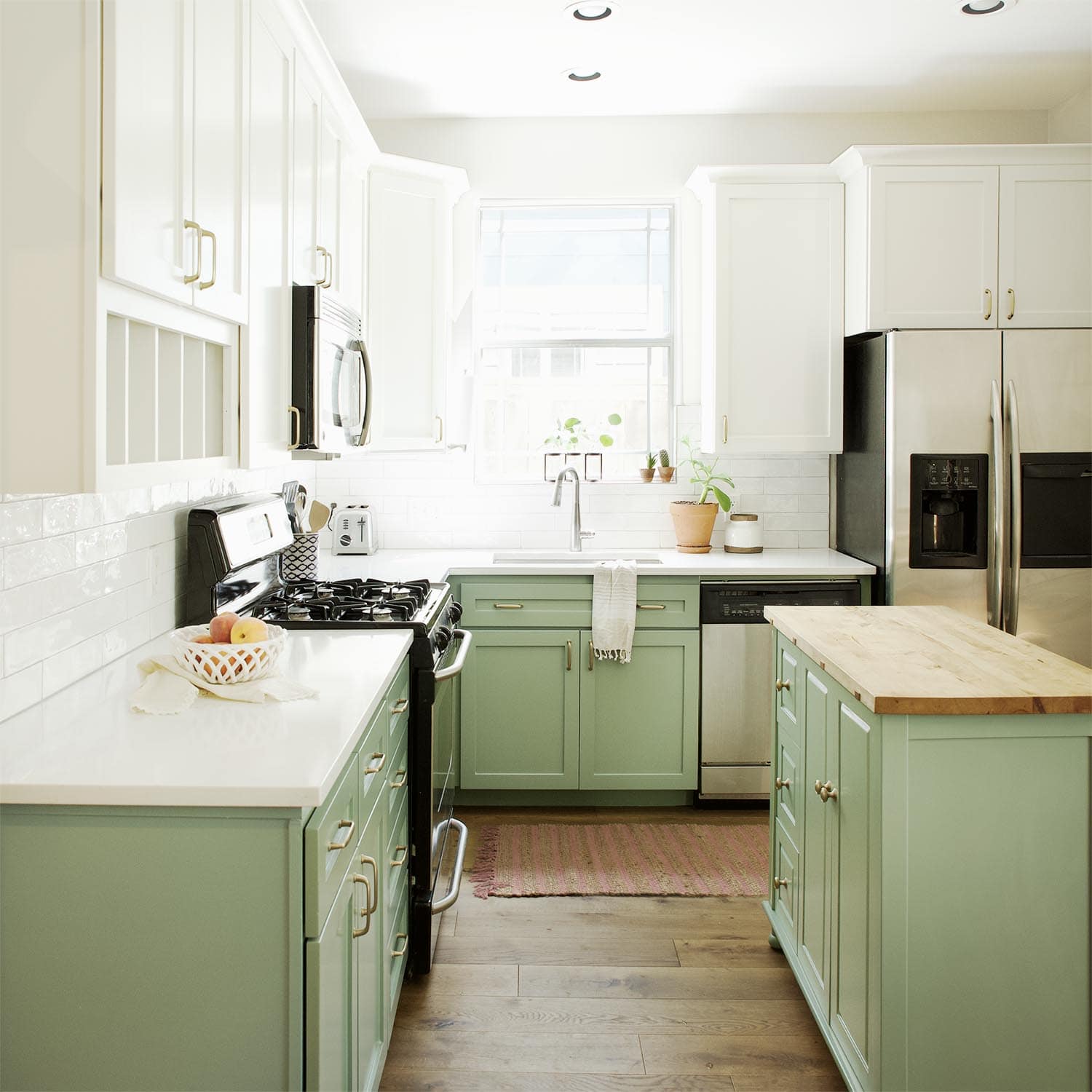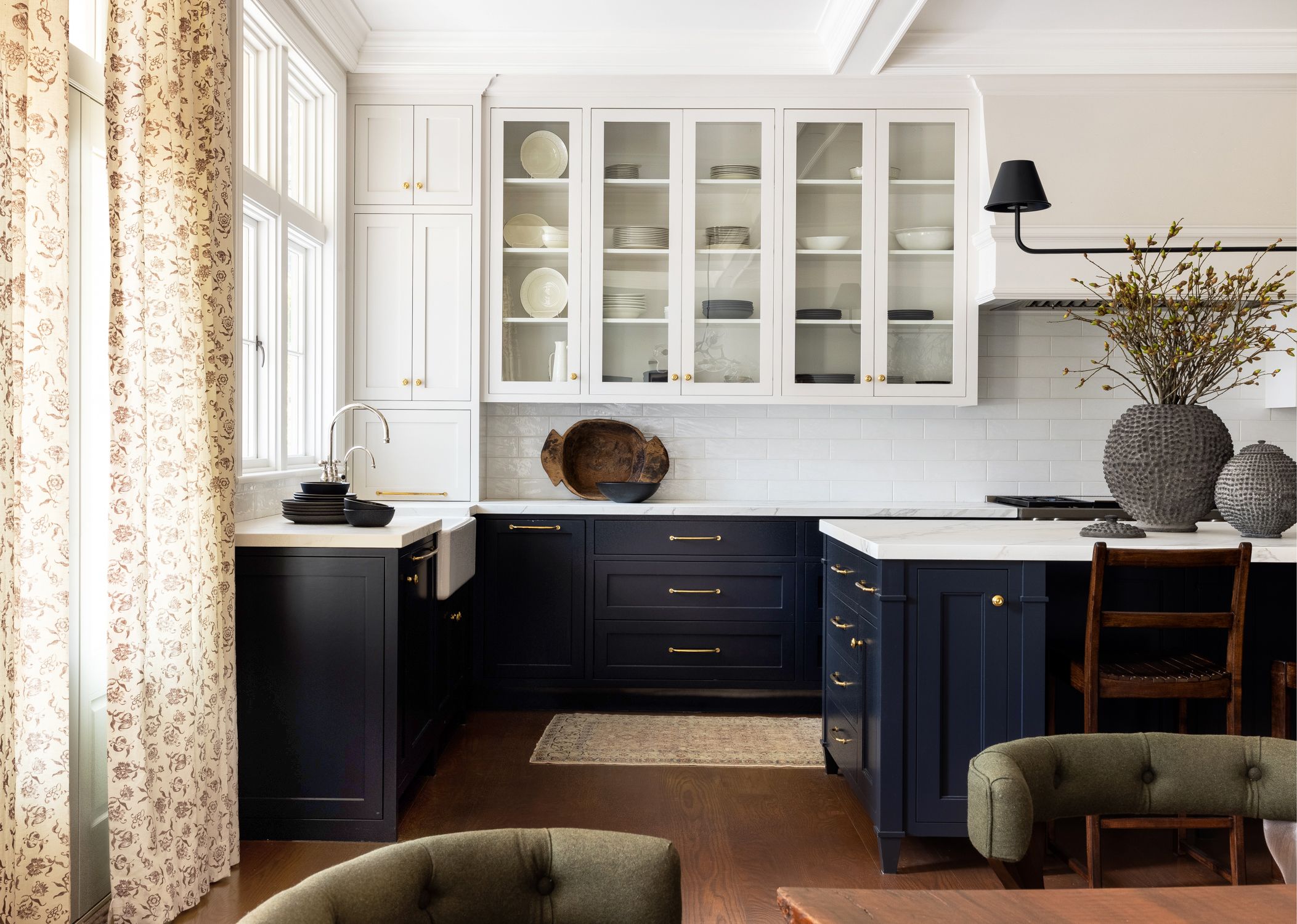Design Considerations for Two-Tone Kitchen Cabinets

Two-tone kitchen cabinets offer a unique opportunity to add visual interest and personality to your kitchen space. By strategically combining colors and finishes, you can create a kitchen that reflects your individual style and enhances the overall ambiance.
The Psychology of Color in Kitchen Design
Color plays a significant role in shaping the mood and atmosphere of a kitchen. Understanding the psychology of color can help you choose the right shades for your two-tone cabinets. For example, warm colors like red, orange, and yellow evoke feelings of energy and excitement, making them suitable for kitchens where people gather for social events. On the other hand, cool colors like blue, green, and purple create a sense of calmness and tranquility, making them ideal for kitchens where relaxation and serenity are desired.
Successful Two-Tone Color Combinations for Kitchen Cabinets
There are countless successful two-tone color combinations for kitchen cabinets, each with its own unique appeal.
Classic Combinations
- White and Gray: This classic combination creates a clean and modern aesthetic, with the white providing brightness and the gray adding a touch of sophistication.
- White and Black: This timeless pairing offers a bold contrast, making a strong visual statement. The white provides a sense of spaciousness, while the black adds depth and drama.
- White and Navy Blue: This combination creates a sophisticated and elegant look. The white brightens the space, while the navy blue adds a touch of richness and depth.
Trendy Combinations
- Green and White: This combination brings a fresh and natural feel to the kitchen. The green adds a touch of vibrancy, while the white balances the boldness.
- Gray and Teal: This combination creates a modern and sophisticated look. The gray provides a neutral backdrop, while the teal adds a pop of color and personality.
- Black and Walnut: This combination creates a warm and inviting atmosphere. The black adds a touch of sophistication, while the walnut brings warmth and richness.
Choosing Complementary Colors for a Cohesive Kitchen
When choosing complementary colors for your two-tone cabinets, consider the following tips:
- Use a color wheel: The color wheel is a helpful tool for identifying complementary colors. Complementary colors are located opposite each other on the color wheel, such as blue and orange, red and green, or yellow and purple. Using complementary colors can create a visually stimulating and dynamic kitchen.
- Choose a dominant color: Select one color to be the dominant color for your cabinets. This color should be used for the majority of the cabinets, while the other color is used for accents or specific areas.
- Consider the existing décor: The colors you choose for your cabinets should complement the existing décor in your kitchen. For example, if your kitchen has a lot of natural wood, you might choose a warm wood tone for your cabinets.
- Test paint samples: Before making a final decision, test paint samples on your kitchen walls to see how the colors look in your space. This will help you visualize the final look and feel of your kitchen.
The Impact of Different Finishes on Two-Tone Cabinets
The finish you choose for your two-tone cabinets can significantly impact the overall look and feel of your kitchen.
Matte Finishes
- Matte finishes create a subtle and understated look. They are often preferred in modern kitchens, as they can help to create a clean and minimalist aesthetic.
- Matte finishes can help to hide imperfections and fingerprints, making them a practical choice for families with young children.
Gloss Finishes
- Gloss finishes create a high-shine look that can add a touch of glamour to your kitchen. They reflect light, making the space feel brighter and more spacious.
- Gloss finishes can be more susceptible to fingerprints and smudges, but they can be easily cleaned with a damp cloth.
Satin Finishes
- Satin finishes offer a balance between matte and gloss finishes. They have a soft sheen that is both elegant and practical.
- Satin finishes are less susceptible to fingerprints and smudges than gloss finishes, but they still reflect enough light to brighten the space.
Practical Applications of Two-Tone Cabinets: Two Tone Upper And Lower Kitchen Cabinets

Two-tone kitchen cabinets offer a versatile approach to design, allowing you to create visual interest, define spaces, and highlight specific features. By strategically combining different colors or finishes for upper and lower cabinets, you can achieve a range of aesthetic and functional goals.
Defining Zones Within the Kitchen
Two-tone cabinets can effectively delineate distinct zones within the kitchen, creating a sense of order and visual separation. For example, using a darker shade for lower cabinets and a lighter shade for uppers can visually separate the work area from the dining or seating area. This approach is particularly useful in open-plan kitchens where a clear division between spaces is desirable. Consider using a bold, contrasting color for the lower cabinets in the cooking area to emphasize its importance and create a focal point.
Implementation and Style Inspiration

Implementing two-tone kitchen cabinets involves careful consideration of color palettes, finishes, and overall design style. This section will provide a comprehensive guide for making informed decisions and creating a visually stunning kitchen.
Choosing the Right Paint Colors and Finishes, Two tone upper and lower kitchen cabinets
Selecting the right paint colors and finishes for two-tone cabinets is crucial for achieving a harmonious and visually appealing design. The process involves understanding the principles of color theory, considering the existing kitchen layout, and exploring different finish options.
- Understanding Color Theory: The color wheel is a valuable tool for choosing complementary or contrasting colors. Consider using a dominant color for the majority of cabinets and a contrasting accent color for the remaining cabinets. This creates visual interest and balance. For example, a light gray base with a dark navy accent can create a sophisticated and modern look.
- Considering Existing Layout: The existing kitchen layout plays a significant role in color selection. In smaller kitchens, lighter colors can create an illusion of spaciousness, while darker colors can add depth and drama to larger kitchens. Consider the amount of natural light available and choose colors that complement the overall ambiance.
- Exploring Finish Options: Finishes like matte, satin, semi-gloss, and gloss can impact the overall feel of the cabinets. Matte finishes offer a subtle and understated look, while gloss finishes add shine and reflect light. Consider the level of sheen desired and the overall style of the kitchen.
Popular Styles for Two-Tone Cabinets
Two-tone cabinets can be incorporated into various kitchen styles, from traditional to contemporary. The choice of color and finish can significantly influence the overall aesthetic.
| Style | Example |
|---|---|
| Modern | A white base with a dark gray accent, featuring clean lines and minimal hardware. |
| Farmhouse | A light gray base with a warm white accent, often paired with distressed finishes and rustic hardware. |
| Traditional | A creamy white base with a darker brown accent, featuring ornate details and traditional hardware. |
| Contemporary | A black base with a bright white accent, often featuring sleek lines and modern hardware. |
Inspirational Images and Key Design Elements
Several kitchens featuring two-tone cabinets demonstrate the successful implementation of this design trend.
Example 1: A modern kitchen with a white base and a black accent. The black cabinets are used for the island, creating a striking contrast and defining the space. The clean lines, minimalist hardware, and sleek countertops further enhance the modern aesthetic.
Example 2: A farmhouse kitchen with a light gray base and a warm white accent. The white cabinets are used for the upper cabinets, while the gray cabinets are used for the lower cabinets. The distressed finishes, rustic hardware, and open shelving contribute to the farmhouse charm.
Example 3: A traditional kitchen with a creamy white base and a dark brown accent. The brown cabinets are used for the island and the lower cabinets, creating a sense of warmth and sophistication. The ornate details, traditional hardware, and patterned backsplash complement the classic style.
Two tone upper and lower kitchen cabinets – Two-tone kitchen cabinets, with their striking contrast between upper and lower tiers, offer a dynamic and visually appealing approach to kitchen design. When choosing hardware for such a scheme, consider the impact of your selection, and b&m cabinet handles can be a stylish and affordable option.
They offer a wide range of finishes and styles to complement your chosen color scheme and enhance the overall aesthetic of your two-tone kitchen.
Two-tone cabinets, with a darker lower section and lighter upper, create a sense of visual interest and balance in a kitchen. This approach also helps to define the space, especially when paired with a sleek, low profile junction box under cabinet , that keeps wiring tidy and out of sight.
The contrast between the two tones is further enhanced by the clean lines of the junction box, highlighting the modern design aesthetic of the kitchen.
